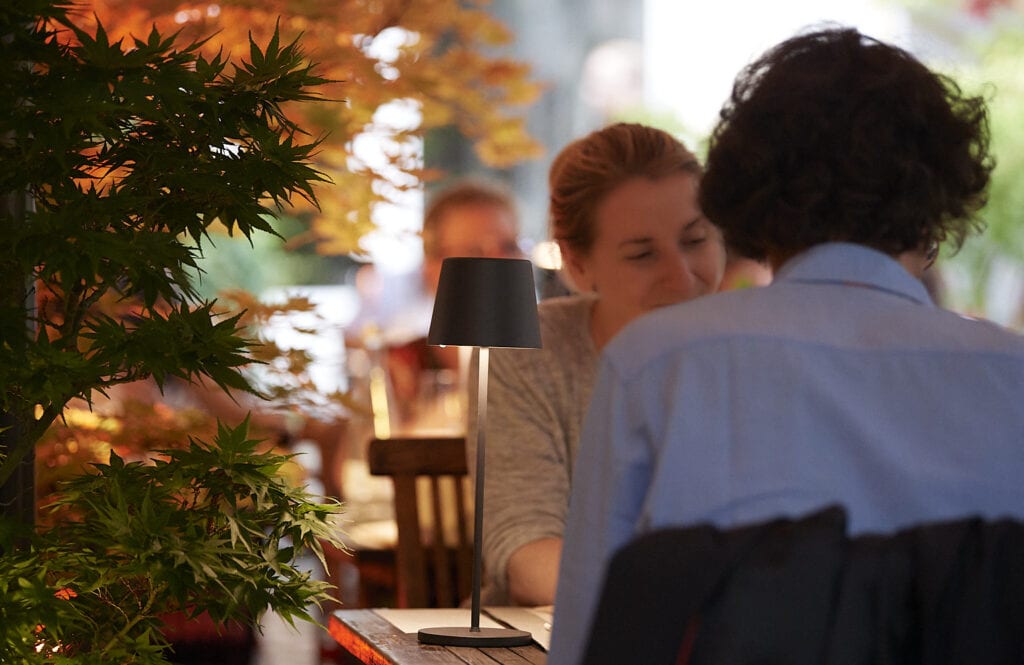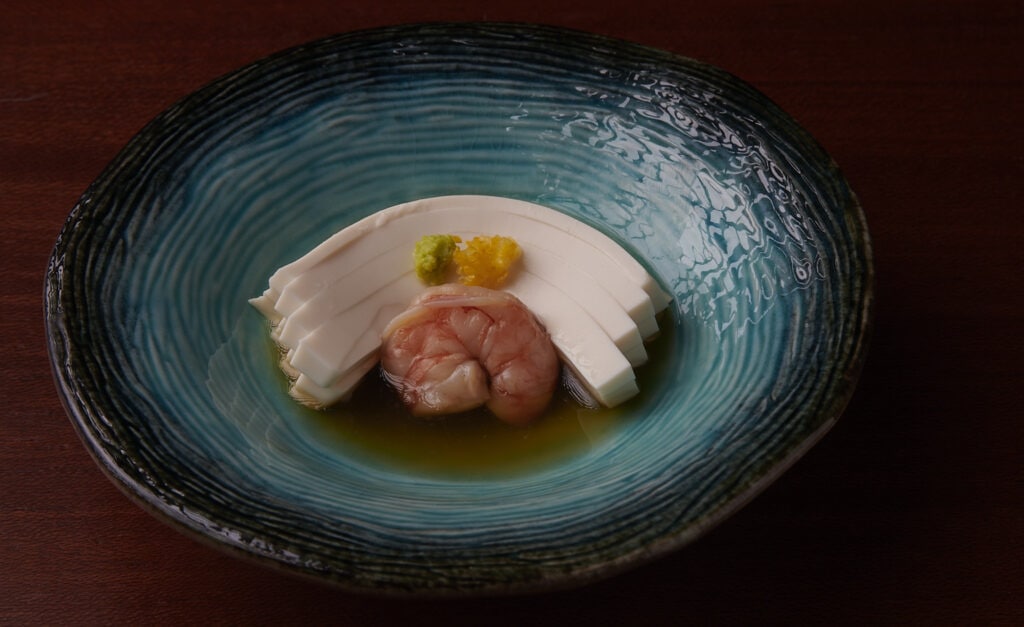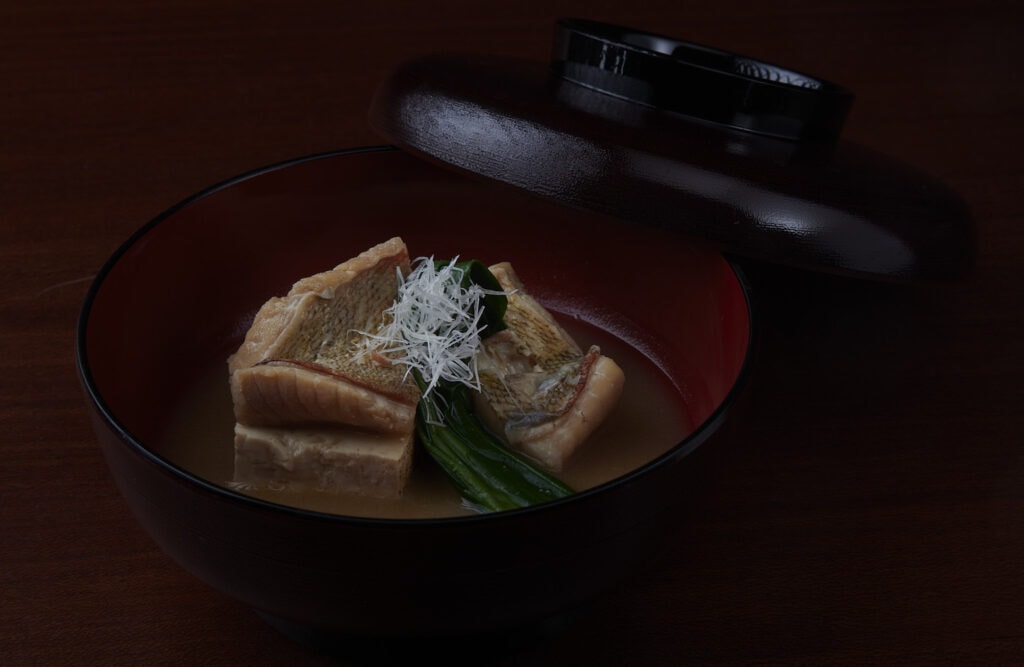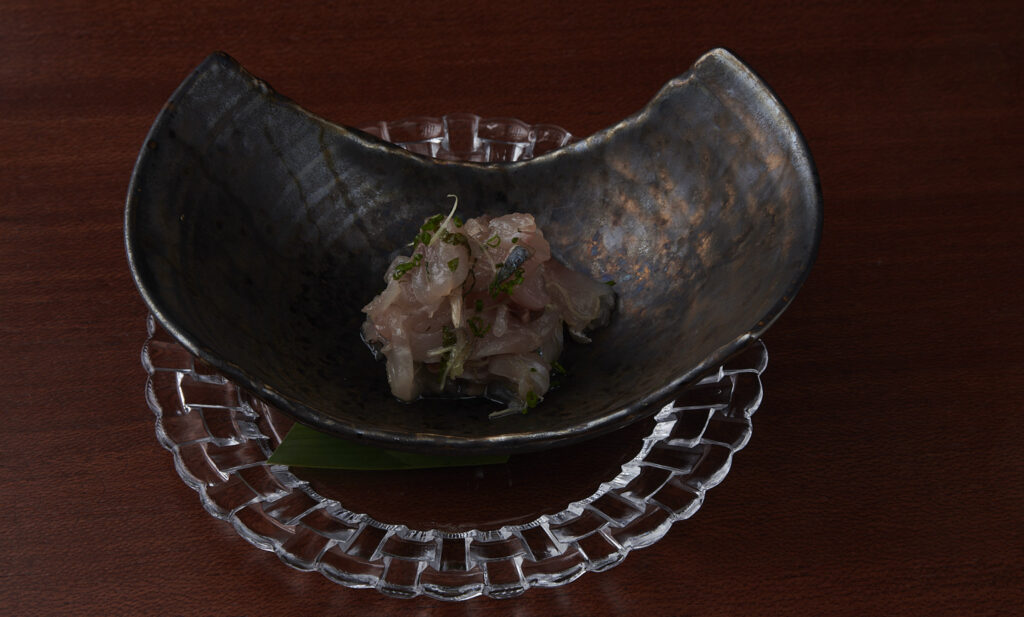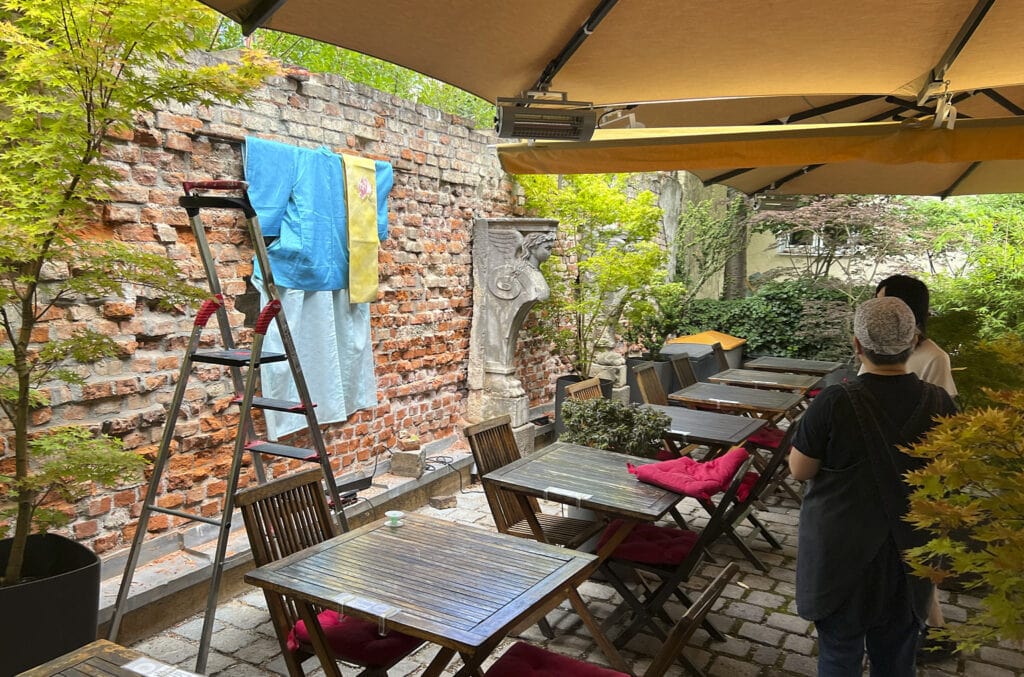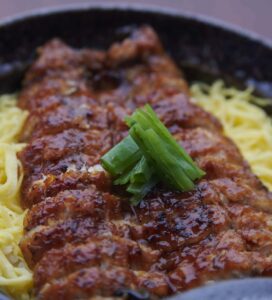After the great success of our first Kaiseki evening in April 2022 we present again an evening with the haute cuisine of Japan.
This time again we will find a suitable Sake-accompaniment, which last time has already found many fans.
UPDATE: within 24 hours our event was almost fully booked and we are grateful for the great reactions and the wonderful evening with our guests on our summer terrace - more below in the article, photos and Reactions supplemented from the evening.
Menu Kaiseki event June 30, 2022 in sansaro
The theme of the menu is, of course, summer: in japanese Kaiseki is known to be about tasting the season sentimentally in the many, finely prepared courses.
This time we have prepared a menu of 9 courses for you, which will be served in 8 runs.
Why the course names here are partly different than in the last Kaiseki menu is one of the many secrets of the strongly ritualized Kaiseki cuisine. For the interested Japanologists & gourmets among you, we will soon publish a basic article about this, comparable to our article about History of the Kaiseki.
But in general, consciously engage with the various delicately assembled trifles, explore with us the Japanese flavors of the approaching summer.
Due to the announced good weather, we will hold the event exclusively on our large terrace. Please be prepared for this.
What is Kaiseki actually?
Here you will find a Introduction to the theme of Kaiseki.
Here you will find the historical development of Kaiseki and why it is not an ascetic monk's meal.
Hashi-wari (箸割, Amuse Bouche)
滝川豆腐
- Takigawa-Tōfu with black tiger shrimp, grated wasabi, finely chopped yuzu zest and dashi based sauce.
The meal begins with a cool dish reminiscent of a clear summer stream. This healthy dish is made with unsweetened soy milk that is chilled and hardened with agar agar imported directly from Japan. This pairs well with the soft texture and light soy sauce-based dashi broth.
Homemade Tōfu made with soy milk and hardened with edge agar. Usually the Tōfu is squeezed with a Tentsuki, but this time we used a knife to cut it into long, thin slices the size of Sanuki Udon and served it in a bonito broth. On top of the Tōfu, shrimp cooked in a thin broth is garnished with sliced yuzu peel and wasabi.
The dish is called Takigawa Tōfu because it resembles a flowing river, which gives a refreshing feeling in summer.
Sake accompaniment: We serve the Salt'n' Yuzu Sake Liqueur with this light dish. The fresh aroma of the yuzu and its subtle saltiness set a nice accent.
Nimono-wan (煮物椀, soup)
赤魚 西京味噌仕立て
- Red scorpion fish in Saikyō miso soup
- grilled Tōfu, finely chopped leek, mustard, pak choi
Fluffy and tender red fish meat and baked tofu are well infused with the flavor of sweet saikyo miso in this soup. Plus a spicy accent of Japanese mustard.
Sake accompaniment: This dish is accompanied by Daishichi Kimoto Junmai, which enhances the flavor of the broth very well.
Tsukuri (造里, sashimi)
鯵たたき
Tataki of wood mackerel mixed with Myōga, chives, shiso leaves and ginger, served with soy sauce
The seasonal wood mackerel is cut into pieces, has a moderately firm consistency and is served with four different spices. A dish which combines particularly well with fine sake.
Sake accompaniment: This course can be combined particularly well with fine sake. The sake Koshi no Kanbai "Sai" is characterized by subtle fruity and mineral notes. Here, raw fish and sake play together excellently!
Yaki-mono (焼肴, fried dish)
茄子の木の芽田楽
Oven baked eggplant with sweet miso glaze and kinome
Medium rare roasted Wagyu beef with fried spring onions
Eggplants, which are in their natural season in summer, are briefly sautéed in oil to remove excess water and concentrate flavor. With tender Wagyu beef and a cool green Kinome sauce, this dish is a winning combination.
Sake accompaniment: To flank the flavor of the Kinome sauce we have a Tarusake chosen, which is aged in cedar barrels.
Hashi-yasume (箸休め, chopstick break)
もずくと葛切りの酢の物
Mozuku seaweed and homemade kuzu noodles in dashi vinegar
Compote of tomatoes
After the nasu dengaku, the mouth is reset with cold mozuku seaweed marinated in a dashi broth vinegar sauce and handmade kuzukiri pickled in vinegar.
Hashi-yasume is a thus light dish meant to revitalize guests after they have eaten the comparatively strong taste of grilled fish.
Mozuku is an algae and is found in shallow waters in warmer regions. About 90% of the products sold are a kind of mozuku called Okinawa mozuku, which is cultivated in Okinawa. Kuzu is a kind of plant, and kuzu flour is a starch obtained from kuzu roots. Kuzukiri is a noodle-like product made by dissolving kuzu flour in water, heating and curing it in a mold, and then cutting it into long, thin strips like udon.
Sake accompaniment: the sake accompaniment rests to this course.
Shii-zakana (強肴, "delicacy with sake")
かれいの霰揚げ
- Corn plaice with arare
- Matcha salt, lemon
The mai plaice, marinated in a light soy sauce, is coated with arare (small, fine rice crackers, reminiscent of a summer hail in shape and size) and deep-fried. The contrast between the crispy surface and the soft flesh of the fish inside is what the Japanese want to taste after...
The meaning of shiizakana is a dish or delicacy served in addition to the already served menu to encourage guests to drink. Thus, the meaning of the course can be translated as "additional delicacy" or "delicacy to the sake".
Sake accompaniment: The ideal accompaniment to fried food on a festive occasion is a dry Sparkling sake with fine pearls. We have a Sparkling Junmai sake from the Shichiken Brewery, which is known for the quality of its sparkling sake. We do not regularly have this sake on our (extensive) menu.
Tome-wan (止椀, Tome(止 means stopping - a soup that should be served at the end of the meal).
赤出汁
- Akadashi (red miso soup)
- Mushrooms, Tōfu, Radish
Aka-miso (red miso) with a long aging period has a rich, savory flavor. This type of miso also has a pleasant bitterness, making it a perfect soup to finish the dish.
This course is served together with the next course - Shokuji.
Shokuji (食事, penultimate course)
そら豆ご飯
Rich in vitamins and minerals, fava beans, which are in season from April to June, are a refreshing early summer delicacy. These fava beans are cooked with rice and - instead of water - a dashi and shio konbu. The flavor and saltiness of shio-kombu bring out the best in the beans.
Sake accompaniment: From the Shokuji course onwards, alcohol is usually no longer served as an accompaniment in the Kaiseki.
However, if you still want to customize the menu with a special WhiskyIf you want to finish your meal with a drink, sake or liqueur, choose from our large list of beverages.
Kanmi (甘味, dessert)
水無月
Minazuki. This time we make the dessert from a base similar to mochi made from shiratama and then topped with azuki bean seeds. With the dessert, we will serve you a cold green tea (Sencha).
In the ancient capital of Kyōto, it is still the custom to eat a triangular sweet made of white bean flour with azuki beans called minazuki on June 30 (June 1 according to the lunar calendar).
Originally, people in the Muromachi period (1336-1573) prayed against summer fatigue by eating ice cream at court on that day. However, the common people at that time did not have access to ice, which was a special luxury. Instead, they ate minazuki, which resembles ice cream, to prevent summer fatigue.
The triangular shape represents a piece of ice or an ice cube on which azuki beans are placed to drive away evil spirits and exorcise demons.
And if we have done our job well, then the dessert just tastes good and you will experience an enjoyable evening 😉
Japanese culture translation
The attentive reader may have noticed: until one day before the actual event, details in the description of the dishes kept changing.
This is not only because we have to respond to the actual availability of some fresh ingredients. First of all, it is because the translation of Japanese Kaiseki food is not just a purely linguistic translation. We also translate for you culturally, trying to work out the connections with our Japanese kitchen and service team. While the regular day-to-day business and preparations are going on in the kitchen, service, room for the menu, we also need to understand which words stand for a cooking process, which for an ingredient, which for a structural menu component and try to explain a context that may be familiar to people in Japan.
In this way, we want to give you an authentic encounter with high-quality Japanese cuisine - and to fulfill our own demand for perfection, as we at SUSHIYA since the opening of our Bentō store in 2006. maintain. We hope you enjoy it and enjoy the journey through the Japanese summer.

Course and reactions Summer Kaiseki June 2022
This time, too, our team spent weeks preparing, planning, organizing, procuring crockery, thinking through concepts and preparing the terrace - all in parallel with our ongoing, "normal" business, where we apply the same quality standards as for such events.
We were very unsettled by the weather situation: first the weather was supposed to be excellent, then clouds moved in and some raindrops were announced.
After intensive consideration, we nevertheless let the event take place on the terrace, which all guests we could talk to later explicitly attested to be the right choice.
Although the kitchen was worried that the food might not arrive perfectly to the customer, the weather gods were merciful and left it at a few drops of rain. This immediately encouraged one customer to make a Haiku (Japanese poem) to poem as Google review: "Kaiseki evening meal was excellent - sound of rain".
Colors of summer in kimono
The biggest drop was then only the wormwood that we had to take down again the beautiful summer kimono of the wife of our chef: the original family heirloom was made exactly for this time of summer in Japan a few decades ago, namely when the current wife of our chef Matsui was born.
At that time, of course, the mother had to pray for the health of the newborn child after giving birth, wearing a kimono that matched the season.
The tradition of Omiya Mirai お宮参り
This ceremony of Omiya-Mairi is held about a month after the birth of a child. For this purpose, one goes to a shrine in the area where the child was born and tells the gods about the safe birth of the child and asks for healthy growth in the future.
Since the wife of our current chef was born at the end of May, the mother had to hold this ceremony at the end of June. Style-conscious as the Japanese and especially the Kyōtoer are, the mother then had a kimono made to match the season.
Not everyone has a summer kimono in Japan these days, because you can usually only wear them sensibly for the relatively short period from June to September. The slightly transparent woven kimono (着物), the accompanying blue jacket called "Haori" (羽織) and the yellow obi (belt, 帯) is exactly in line with the season in terms of color, material and manufacturing technique, reflecting the attempt to provide some lightness, airiness and cooling in the often sultry summer in Japan. Just as we tried to do with the choice of tableware and food for this Kaiseki event.
However, since it was not clear whether and how much it would end up raining in the evening, we unfortunately had to take down the heirloom before the guests arrived.
Nevertheless, we are grateful for the honor and trust that the chef's family, including the now sprightly mother or grandmother, gives us and we look forward to weaving Japanese culinary and culture for our guests again in the future.
Enthusiastic praise for the second Kaiseki evening at sansaro
Even without the hanging kimono, however, it was a successful evening, if we can believe the generous feedback from the guests.
Throughout the bank we have received enthusiastic reactions. We were also happy about the beautiful atmosphere that was created on the terrace despite the light rain in the first occupancy, at first almost meditative, later a quiet but cheerful fine-dining atmosphere.
One guest, who to our knowledge enjoys many high-end restaurants around the world, was enthusiastic about the Wagyu. That Wagyu would simply taste is not an art, that is already due to the high-quality material, but to combine taste, texture and combination with the eggplant in such a way, that is quite great cinema.
Many guests have praised the again very deliberately selected and coordinated sake accompaniment, which due to our extensive selection and long experience in the field of sake has now become a core competence of ours, which even many significantly more expensive restaurants in Germany can not represent.
Every event is a unique, culinary & cultural experience
At SUSHIYA, we have been working behind the scenes with enormous meticulousness and enthusiasm for Japanese culture since our founding in 2005. We know that many guests and also many professional restaurant testers have limited knowledge of Japanese cuisine and its special requirements and can hardly estimate the corresponding effort and thus the performance.
We are all the happier and more grateful for the fact that for many years many guests have been following us to our special events, which we always organize.
Whether Sake Tasting, Whisky Tasting, special occasions like New Year's Eve or Valentine's Day, Sushi course or Catering: what we do, we have always done with enthusiasm, ambition and great attention to detail. On these occasions you will get a real insight into the Japanese food culture and our chefs can show their culinary skills.
The joy we give our customers, the reactions and the loyalty we enjoy are a great gift to us. In this sense, we are happy to organize more events for you and we can say from experience that every single event we offer is a culinary-cultural event that cannot be reproduced.
So, as always, we recommend: if you're interested, join us for the next event, subscribe to our newsletter.
We are looking forward to your visit!
Reserve for the Kaiseki event on June 30
On June 30, 2022 our restaurant will be dedicated to our Kaiseki event, unfortunately on this evening there will be no à la carte, no takeaway and and no deliveries.
We can only offer a very limited number of seats for 18.15h or 20.15h due to the delicate processes in the kitchen and we ask you to come on time.
The first occupancy still has the exclusive luxury of a relatively empty restaurant, with the arrival of the second occupancy it becomes a little more lively and you may already see at the neighboring table what awaits them in the later courses.
We expect you to spend about 2 1/2 to 3 hours enjoying the menu at your leisure, but there are No time limitexcept that we close around or shortly after 23h as always. And in the sequence of courses, of course, have to orient ourselves to the kitchen, because the dishes want to be served à la minute.
Depending on the weather, we decide whether the event will be held indoors or on our large terrace, we ask for your understanding that the kitchen and service will commit to one variant.
We currently (Tuesday, June 28) assume that the event will take place exclusively on the terrace.
The Kaiseki menu costs 139 euros per person. If desired, there is a suitable sake accompaniment - or you can of course also an interesting desire sake, wine or even Japanese whisky from our extensive drinks menu select
Generally we recommend to Kaiseki SakeThis is indeed a classic pairing, especially since a kaiseki offers many subtle nuances and the sake should blend in with the menu but not play too much into the foreground.
A few hours after publication we are already reserved to 70%. If you can't get a seat online anymore, please contact us via our contact form.
Let's stay in touch
Are you also interested in a Kaiseki event, but could not attend this time?
Would you like other events about Japanese cuisine or have special questions that the Internet does not answer?
Let us know! We are always happy to receive feedback.
And who subscribed to the newsletter will of course be the first to be informed when we have another Kaiseki event, a Sake Tasting or a Whisky Tasting or other events.
We are happy if you are interested in such events and we can always design a new menu for you for each season.
We look forward to your visit, thank you and see you soon at sansaro!
